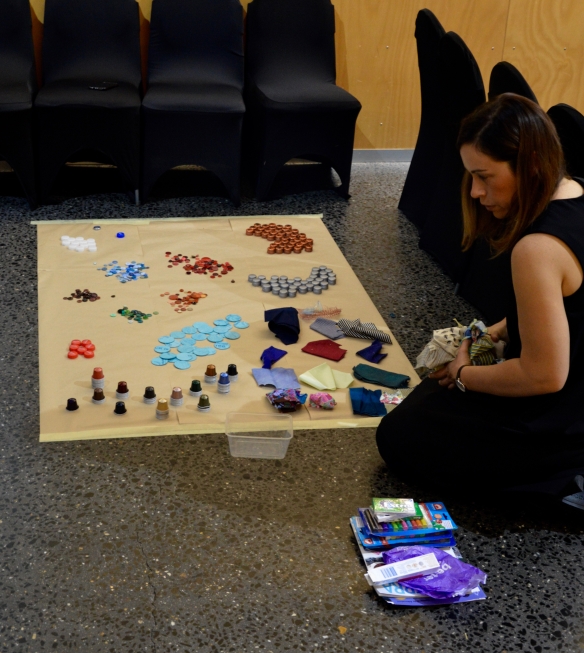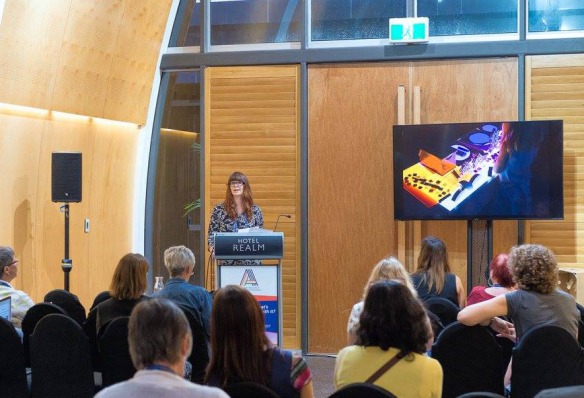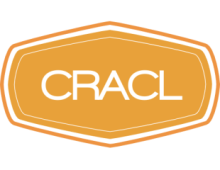This post is co-written by Nina Odegard and Louisa Penfold about a recent symposium given at the Australian Association for Research in Education in Canberra, Australia. This post is published on all the participants’ blogs.

On November 27, 2017 Pat Thomson (University of Nottingham), Nina Odegard (University College of Oslo and Akershus) and myself (University of Nottingham) presented at the AARE conference on young children’s learning with materials through play. Julianne Moss from Deakin University was the session discussant. The symposium was put together as a result of our common research interest in material-led play in early childhood education.
The symposium was built upon the proposition that many educators and artists working with young children are committed to play-based practices and understand this as critical to individual and social learning. The session focused specifically on early years arts-orientated play through asking: when children are ‘doing art’ play what are they learning with the materials they choose? The presentations explored the idea that when children are playing with materials they are simultaneously:
- learning about concepts such as line, pattern and form;
- learning about the properties and potentials of materials such as how they can be pushed, pilled, stretched and transformed;
- learning what materials are and do in the world;
- being called and directed by the materials, forming possible selves with materials and forming new relations with the world
- being given the possibilities to work with materials without having to name, define or categorize what they are doing
Why is this important? Academics and education practitioners are becoming increasingly interested in ways that humans can and need to be de-centred in order to take account of the importance the material, both organic and inorganic, worlds in which we live. This is essential in creating discourses and practices that offer hopeful action in an ecologically and ethically challenged world. This also comes at a time when policy makers around the world increasingly position play-based early childhood curriculum as trivial and not sufficiently focused on knowledge and skills. Consequentially, we identify an urgent need to push further with discussion on why materials matter in early childhood play-based arts programmes and projects. Our concern was to not only explore and explain the importance of play in early childhood and to promote the value of the arts, but also to broaden our explanations of what this is.


Young children’s thinking with natural materials in art museums
Louisa’s presentation explored the invitations natural materials such as logs, leaves, sticks, stones and clay offer in young children’s play in art museums. Descriptive examples from data generated in an early year’s art studio session at the Whitworth Art Gallery, Manchester, was used to consider the encounters (Pacini-Ketchabaw et al., 2017) between children, artists, curators, artworks, materials and the museum space. Lenz-Taguchi’s notion of intra-active pedagogies (2010) – where one’s attention shifts from interpersonal relationships to the relations between humans and non-human entities – was drawn upon to consider children’s learning with and through artworks and materials in the art museum.
Descriptive examples of visual documentation including photography and video footage was discussed in relation to how the ‘stuff’ curated for the art studio provoked open-ended possibilities for children’s thinking and learning. The presentation concluded with the suggestion that through thinking with materials, new pedagogies are able to be constructed that allow artists, learning curators, children and their families to continuously produce and reconsider the relations between themselves, others, artworks, materials and the natural world.


Imagine sustainable futures – children´s experimental encounters with matter
Nina’s paper focused on the concepts of aesthetics and aesthetic explorations, ethics and how these open possibilities for creative thinking, doing and being. Concepts of new materialism were discussed in relation to the potential they bring for expanded discourses and practices relating to recycling, sustainability and consumption.
The presentation drew upon data generated in a ReMida creative recycle centre in Norway. Results suggested that children were ‘rhizomatic thinkers’ (Dahlberg, 2016, p. 131) in their aesthetic explorations of recycled materials in which children’s learning shifted between disciplines to make use of the ‘vibrant matter’ (Bennet, 2010) and ‘how matter comes to matter’ (Barad, 2008). Nina also focused on pedagogical practice, were the children’s process itself is valued, and there is a lesser or no focus on the result (Dahlberg, 2016). This builds on previous research from the ReMida centre (Odegard, 2016) that argued that recycled materials can open up to the discovery of new ‘hidden’ pedagogical spaces, that produce meeting places for the emergence of new ideas (Odegard, 2012). The children´s exploration with vibrant matter like recycled materials seems to evoke creativity, curiosity, problem-solving and narrate stories. Through this, the paper argued for a paradigm shift away from the neoliberal way of measuring and categorizing learning and towards an emphasis on the collective and creative pedagogical processes.

What can rope do with us? Agency/power and freedom/captivity in art play.
Pat’s paper, co-written with Anton Franks, discussed an ongoing ethnographic study conducted within the ‘World without walls’ programme run by Serpentine Galleries in London. The programme supports artists undertaking residencies in one early childhood centre in central London. The residencies focus on different kinds of art/play that draw upon the artist’s practice and selection of materials for the programme. The presentation discussed data generated from Albert Potrony’s residency in which the artist elected to use large material objects such as card, plastic, foam and rope.
Throughout the sessions, numerous children were drawn to/called by the rope (Bennett, 2010). Perhaps unexpectedly, the children wrapped/tied up their teachers and the learning curator with the rope. The data suggested an explicit exploration of the kinds of power-laden relationships that exist between adults and children in educational settings. Drawing on field notes, photographs and interviews, the paper presented an analysis of the materials on offer and their affordances. The presentation concluded considering the material differences made by, with and through the rope, and probe further the ways in which it co-produced caring and ethical experimentations with power, agency, captivity and freedom.
Following the presentations, attendees had an opportunity to play with an array of materials arranged in the symposium space. As a group we then asked and explored questions such as why were particular materials chosen and not others? What was possible with the materials and what wasn’t? What about the play experience can be put into words and what can’t? Did you feel a desire/need to name, categorize or define your installation? What senses were used, and what feelings were evoked through playing with the materials?
Overall, we hoped that the symposium shared thinking and opened up new discussions around early childhood education, play, the arts and materialism. We were inspired by the questions and discussion amongst the group throughout the presentation and hope to build upon this in the future.
References
Barad, K. (2008). Posthumanist performativity: toward an understanding of how matter comes to matter. In S. Alaimo & S. J. Hekman (Eds.), Material feminisms (pp. 120-157). Bloomington, IN: Indiana University Press.
Bennet, J. (2010). Vibrant matter, a poltical ecology of things: Duke University Press.
Dahlberg, G. (2016). An ethico- aesthetic paradigm as an alternative discourse to the quality assurance discourse. 17(1), 124-133. doi:10.1177/1463949115627910
Lenz Taguchi, H. (2010). Going beyond the theory/practice divide in early childhood education: Introducing an intra-active pedagogy. New York, NY: Routledge.
Odegard, N. (2012). When matter comes to matter – Working pedagogically with junk materials. Education Inquiry, 3(3), 387-400.
Odegard, Nina, & Rossholt, Nina. (2016). In-between spaces. Tales from a Remida. In Ann Beate Reinertsen (Ed.), Becoming Earth. A Post Human Turn in Educational Discourse Collapsing Nature/Culture Divides. Rotterdam: Sense Publishers.
Pacini-Ketchabaw, V; Kind, S; & Kocher, L. (2017). Encounters with materials in early childhood education. New York, NY: Routledge.























